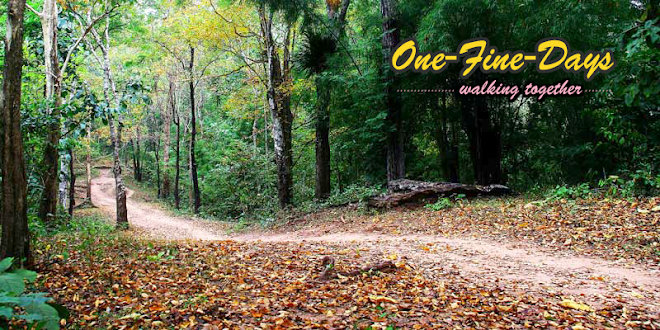Photographer : 林 昊 (Lin Hao)
Last saturday night
I will went to the Rama 8 Bridge and
chose some areas at Mukhkawan Rungsan Bridge for taking photos.
suddenly it started to rain heavely.
poor thing, I had no choice but to find eaves to shelter,
I was not going to anywhere just waiting until it stoped,
after all,taking a taxi back home was what i could do,totally helpless.

On Sunday 20, 2008
about 9.00 pm. My friend called me and we chatted a lot and he asked "what's your plan fo r today?" I thought for a while and we agreed to get a trip to "Trip Nakhon Pathom"

I left home by motorcyle to main road and took a bus to the Laksi railway station, there I bought a ticket for Laksi to Bangkok railway station (Hua lam pong), plus I had appointment with my friend to meet there.
We went to Nakhon Pathom by train, it took almost 2 hours to get there, staying on the train and looking the view outside of the window, it was good for us taking photos ,as many as we can ,cool!





"Jork..." my belly lets out a sound of ko-ko and, i knew it was because I had not eaten anything from the morning. so the most important thing we we gonna do is to have lunch at Nakhon Pathom, Since I was that hungry and can't endure more, so I bought 2 packs (pork postpone with basil, fried egg and rices) for us.
we arrived Nakhon pathom at last, We went out of the train and walked about 500 metres. We can saw the big pagoda which many local people call "Phra Pathom Chedi"
 Phra Pathom Chedi is the highest stupa (http://en.wikipedia.org/wiki/Stupa) in the world
Phra Pathom Chedi is the highest stupa (http://en.wikipedia.org/wiki/Stupa) in the worldwith a height of 127 m. It is located in the town Nakhon Pathom (http://en.wikipedia.org/wiki/Nakhon_Pathom),Thailand (http://en.wikipedia.org/wiki/Thailand).
The name Phra Pathom Chedi means Holy chedi (stupa) of the beginning. The stupa at the location is first mentioned in scriptures of the year 675, however archaeological findings recored that a first stupa was dated back to the 4th century.
In the 11th century it was overbuilt with a Khmer style prang, which was later overgrown by the jungle. The ruin was visited several times by the later King Mongkut (http://en.wikipedia.org/wiki/Mongkut) during his time as a monk, and after his coronation he ordered the building of a new and more magnificent chedi at the site. After 17 years of construction it was finished in 1870, and the population of nearby Nakhon Chai Si (http://en.wikipedia.org/wiki/Amphoe_Nakhon_Chai_Si)
was ordered to move to the newly created town around the chedi. Chedi of Nakhon Pathom

In 2005 the building was submitted to the UNESCO (http://en.wikipedia.org/wiki/UNESCO)
as a future world heritage (http://en.wikipedia.org/wiki/World_heritage) site.
We wandered around the big pagoda up and down to this temple, then continued for about one kilometers. Finally, we arrived at Sanam Chandra Palace.
 Sanam Chandra Palace
Sanam Chandra PalaceSanam Chandra Palace is located in Nakorn Pathom, a province 56 km south of Bangkok . The palace is about a kilometer away from the majestic pagoda, Phra Pathom Chedi. The location was formerly called “ Noen Prasart “, and believed to be the site of an ancient palace. Close to Noen Prasart, before a Brahman shrine, was located a natural pool called “ Sa Nam Chand “ (presently Sa Bua).
Before ascending the throne, the then Crown Prince Vajiravudh ( later H. M. King Rama VI 1910 - 1925 ) came to this city to pay homage to the big pagoda. He wished to build a palace here as a retreat and a residence during his pilgrimage trip to the pagoda. He preferred this area for he viewed it as a strategic location. In 1907, he bought about 335 acres of land around Noen Prasart from local people. He then had Luang Phitak Manop ( Noi Silapi, later Phraya Visukam Prasit ) design and supervise the construction of the palace. The construction began in 1902 by the end of the Fifth Reign ( 1868 – 1910 ). It was completed in 1911. H.M. King Rama VI named it Sanam Chandra Palace .





In addition, the king had another plan for this palace. It was to serve not only as a retreat, but also as a stronghold during a national crisis. Here, he regularly held practices for the Wild Tigers Corps, a para – military troop.
 On December 1 st , 2003, the Committee for the Renovation of Sanarm Chandra Palace chaired by HRH Princess Bejraratana Rajasuda, H.M. King Rama VI's daughter, in collaboration with the Ministry of Interior, Mr. Navin Khantahirun; Nakhon Pathom Governor and Assistant Professor Likid Khanchanaporn, the Vice – President of Sanam Chandra Campus, Silpakorn University returned the palace including its satellite buildings to Bureau of the Royal Household following the wishes of HRH Princess Bejraratana Rajasuda. At present, to Bureau of the Royal Household has since opened the Bhimarn Prathom Residence including the Prayer Room in this residence, Samakkeemukamartaya Hall, Ganesa Shrine, Chaleemongkolasana Residence, Mareerajaratanabulung Residence, Thub Kwan Residence and Statue of Yalae, to the general public.
On December 1 st , 2003, the Committee for the Renovation of Sanarm Chandra Palace chaired by HRH Princess Bejraratana Rajasuda, H.M. King Rama VI's daughter, in collaboration with the Ministry of Interior, Mr. Navin Khantahirun; Nakhon Pathom Governor and Assistant Professor Likid Khanchanaporn, the Vice – President of Sanam Chandra Campus, Silpakorn University returned the palace including its satellite buildings to Bureau of the Royal Household following the wishes of HRH Princess Bejraratana Rajasuda. At present, to Bureau of the Royal Household has since opened the Bhimarn Prathom Residence including the Prayer Room in this residence, Samakkeemukamartaya Hall, Ganesa Shrine, Chaleemongkolasana Residence, Mareerajaratanabulung Residence, Thub Kwan Residence and Statue of Yalae, to the general public.


No comments:
Post a Comment